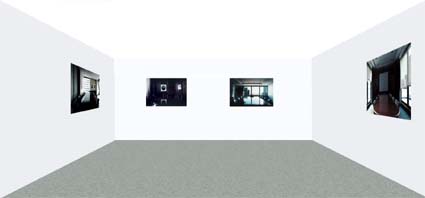Large urban constructions, structures of social interactivity and the role of the individual person within are the main interests of my artwork. I have been investigating different kinds of public space within cities, which I understand as the site where social relations become three-dimensional within a civic space. In this context I am interested in the construction of the self through human interactions, the positioning of the individual in relation to the perceived outside - to physical, social and cultural space.
Looking at the city as an organism, the clearly defined corporate work and office environment is located at the fringe of social organization. The material environment of social customs and linguistic usage create a collective psychological milieu of social control in which each individual mind is immersed. Along with communication structures and behavioral codes, the architecture corporations use is well-considered and holds a clearly defined position within the strategies of modern business.
The piece “Understanding Geography” shows different kinds of conference rooms, not exclusively big boardrooms but ones that are used everyday. Captured in a moment of emptiness (not in use) my emphasis leads to the psychology of the space. The available light reveals the rooms in unfamiliar ways, treating them as silent signifiers for possible actions taking place within, as well as for the people who use them everyday. The work “Understanding Geography” questions the role architecture takes in the production of this particular social/hierarchical situation.
Tim Maul on “Understanding Geography”
“At a time in history when the cameras go everywhere and photograph everything Andrea Geyer’s color images of normally inaccessible corporate board rooms take us places few men (and even fewer women) have ever been. Not simply a familiar critique of big business, Geyer documents these environments with a respect and awe usually reserved for the great outdoors. The absence of people in these ‘real world’ places of power only deepens their chilly transcendence and widens the distance between the public and the private.”
